Podcast 309: Flying Saucers, Rainscreen Walls, and Barndominiums
Matt, Brian, and Patrick hear from listeners about outdoor cats, sawhorses, and flying saucers before taking questions on wall assemblies for a barndominium, winter indoor humidity, and how to vent rainscreen walls.
Follow the Fine Homebuilding Podcast on your favorite app. Subscribe now and don’t miss an episode:
 |
 |
Help us make better episodes and enter for a chance to win an FHB Podcast T-shirt:
www.finehomebuilding.com/podcastsurvey
Wallpello on YouTube takes us to task for promoting outdoor cats. Rob shares his ’60s-era sawhorse brackets via video. Carson offers his thoughts on staying warm. Brad describes his experience of building a flying saucer. Ian asks about roof and wall assemblies for his barndominum. Jeff asks about running his HRV and humidifier at the same time. Kurt wants to know about venting rainscreen walls.
Editor Updates:
- Brian’s air filter
- Matt’s dog house, battery-powered nailers
Listener Feedback 1:
From wallpello on YouTube Episode 301 writes: Outdoor Cats are horrible for the environment for a guy that is constantly preaching green having an outdoor cat is super irresponsible.
Your average outdoor pet cat still kills around two animals per week, according to the Wildlife Society and the American Bird Conservancy.
Researcher Pete Marra of Norwalk Connecticut, He and colleagues used mathematical models to analyze data from local cat predation studies going back more than 50 years. When they extrapolated the data to reflect national trends, they were stunned. According to their calculations, outdoor cats killed somewhere in the ballpark of 2.4 billion birds and 12.3 billion small mammals in the U.S. per year—far exceeding any other human-influenced cause of avian death, such as pesticides or collisions with windows.
Related Links:
Listener Feedback 2:
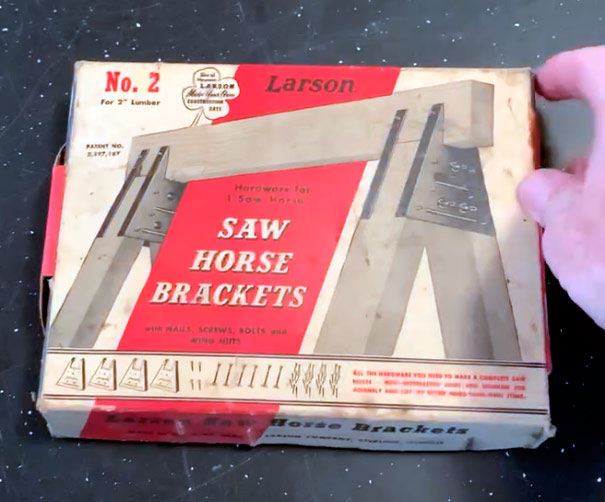
This week I read fine Homebuilding’s recent saw horse review – good stuff. If you’d like to see what saw horse technology looked like back in the day, I can help.
I was plumbing through a cooler of tools today (what better way to spend one’s Thanksgiving!). The tools all came from my wife’s grandfather’s basement 25+ years ago, and I’m slowly reviewing and incorporating the tools into my collection.
I made the attached short unboxing video of a (then-state-of-the-art?) sawhorse kit. It’s one of those sheet metal ready-to-cu-your-hands types. And, as a bonus, I found gold leaf in the cooler – something every well-equipped toolbox needs. I hope this helps show how far we’ve come.
Related Links:
Listener Feedback 3:

Related Links:
- Durabold Dish Heater Parabolic Electric Heater (affiliate link to Amazon.com)
Listener Feedback 4:
Brad from Minneapolis, MN writes: Hi all, I’m a bit behind on my podcasts and just heard episode #267 where Joe from Des Plaines, IL commented on an old Popular Science article. Like you guys, I consumed both Popular Science and Popular Mechanics throughout my youth. When I wasn’t reading another article about flying cars, I was perusing the classifieds for go-cart and minibike plans. After building both of those, the ad in the next issue of PM leapt off the page: The Bartlett Flying Saucer!
I couldn’t part with my $4 fast enough! I was 14 years old and embarking on my biggest project adventure yet—a 9’ diameter hovercraft constructed in the same fashion as WWI biplanes with muslin fabric stretched over a lightweight wooden rib structure and coated with a zillion coats of airplane dope. It “flew” under the power of a salvaged 3.5 HP Briggs & Stratton lawnmower engine with a junkyard radiator fan welded to the shaft. (I later ponied up the $300 for a legit airplane propeller after one of the radiator fan blades buckled under the static pressure, struck an engine strut, and demolished the engine. That’s OK, I had a 7 HP Tecumseh just waiting for a chance to fly!)
Below is me taking an early test flight. Evidently, I had no parents at this time in my life—note the bare feet, lack of a blade guard over the propeller I’m straddling, and using some hastily attached clothesline to hold on to. Safety features were evidently planned for another day—perhaps when I got my flying car and didn’t have to rely on mom for rides to the hardware store!
Always-mild-and-sunny Minneapolis, MN
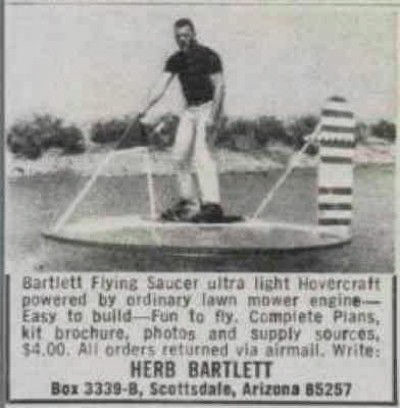 |
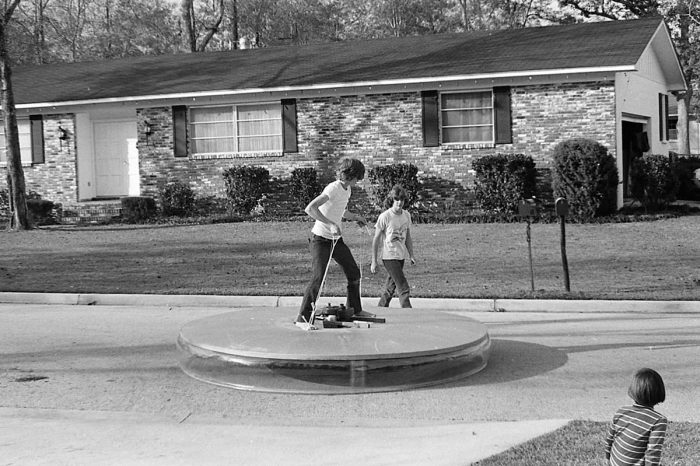 |
Related Links:
Question 1: What’s a cost-effective way to insulate my new barndominium?
Ian from Tiffin, OH writes, Hello Fine Homebuilding! We are building a two story barndominium 44Lx22Wx30H with a 12/12 pitch scissor truss ceiling. Bottom floor will be a 4-car garage/workshop and the top will be living space. We live in north central Ohio (Tiffin) and want to insulate the house but be sensitive to my son’s allergies. I have been getting conflicting information in regards what would be cost effective to insulate our building. The garage does not need to need to have strict climate controlled – a shop heater should suffice.
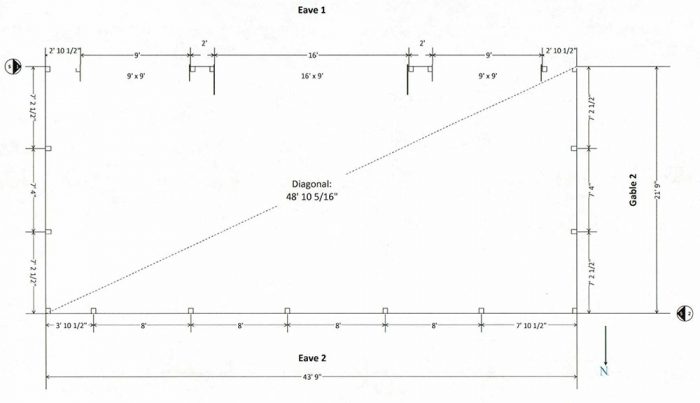 |
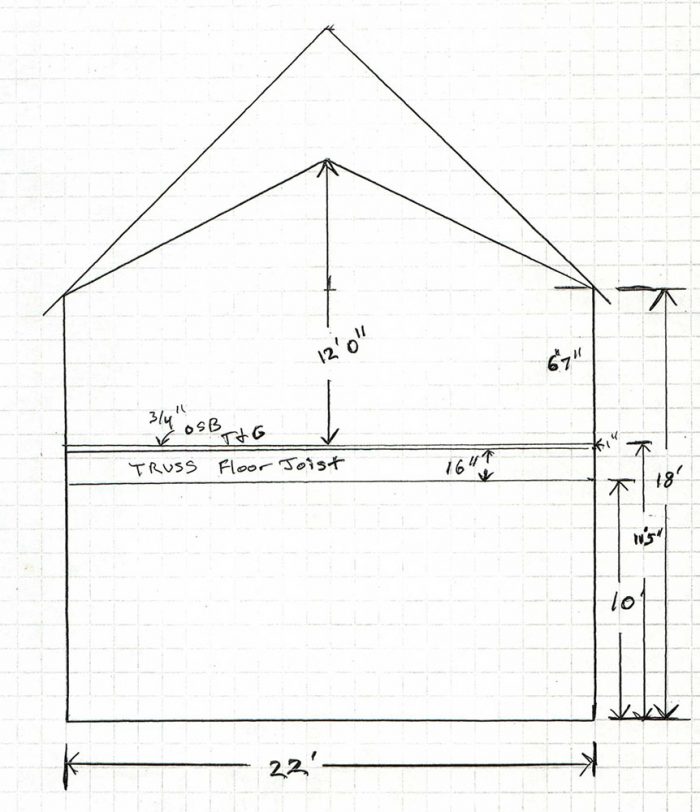 |
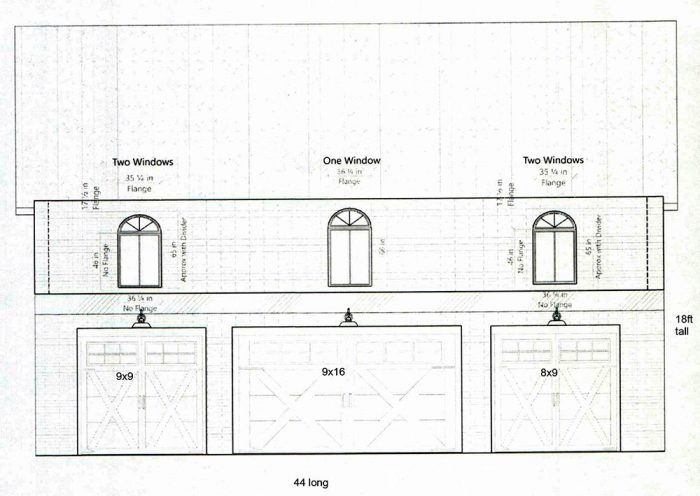 |
Question one: Would you recommend Envelop sealing the building with REX/Tyvek then open cell spray foam the exterior walls.
Question two: The company that is building the shell with metal exterior, uses REX felt on the roof. We have a 12/12 pitch roof with scissor trusses. How would you recommend to insulate that area? Spray foam directly to the metal, or to roof, or use mineral wool above the ceiling? How would you vent the attic area?
Question three: Would you spray the underside of the floor? Closed cell to help seal out the odors from the garage?
BTW: We have a found a company that met our green/low VOC needs for spray insulation. Natural Polymers IIc.
Thanks in advance for your advice.
Related Links:
- Questions about a stick built barndominium
- Ventilation or no ventilation in spray foam insulated building?
Question 2: Is it OK to have a humidifier and an HRV in the same house?
Jeff from Excelsior, MN writes, Hello all, I am a long-time listener of the podcast. As a pro (Remodel Carpenter) and unhinged DIYer, I thoroughly enjoy listening to the podcast every week. I enjoy nerding out over houses too and hearing about your own ongoing projects.
I’m writing to you about my own home. I’m not really sure what style the house is… possibly coastal farmhouse?? But, it is a two story (twin cities, Minnesota) spec home built in 1996, which, much to the bane and joy of my wife, I am meticulously remodeling one room at a time. That is to say, when I’m not battling contractor burnout and have motivation to work more after work, between jobs, or on the weekends.
In a feeble attempt to make it a “high performance” home, I’ve done a great deal of air sealing, reinsulated the roof and whatnot. Although I haven’t used any type of blower door on the home, I speculate that I’ve done a pretty good job based on the window glass making a significant amount of noise when I open and close the bedroom doors. So scientific, I know. Ha ha
Anyways, I am writing to you Because I recently installed a whole home humidifier, which is controlled by a 3rd Gen Nest thermostat. The home also has a HRV on a forced air furnace. I wanted to install the humidifier because the humidity levels in the winter would drop down as low as the high to mid 20’s. I now have the minimum humidity set to 35% and take great care maintaining my HRV.
After too much thought about the setup, I figured I’d ask the experts. How will the HRV and humidifier work together? From my understanding they are opposing forces. … Did I waste a few hundred dollars on a humidifier and a day’s worth of work, which included pulling a new thermostat wire. Should I have just turned down the HRV and focused more on air-sealing?
Thanks in advance for a lesson on how these systems work together. My apologies if you’ve already covered this one.
Self-indulgently, I attached a few photos of the house and some highlights of DIY projects.
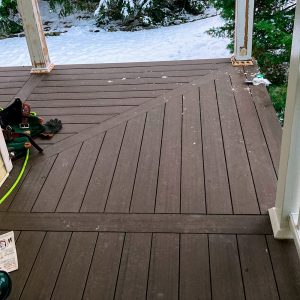 |
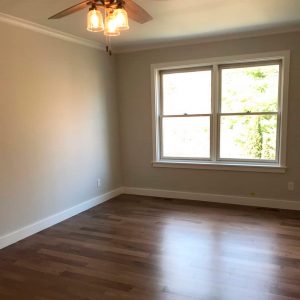 |
 |
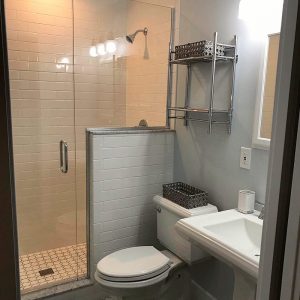 |
Related Links:
Question 3: Can you vent the top of a rainscreen into your roof vents?
Kurt from Arlington Heights, IL writes, Hello, I’m designing a new house near the coast in St. Petersburg Florida which will have a rainscreen behind the siding. The roof will be a hot roof so it will not be ventilated. However, in between the two, I have enclosed eaves (soffits). Should I vent the rainscreen through the eave or is this just a way to introduce warm moist air into the eave space? If I’m relying on the stack effect to circulate the air, wouldn’t it be better to connect the eave to the rainscreen? If that’s a bad idea, does the eave need a vent separate from the rainscreen, so the air inside doesn’t condense and rot the framing from the inside out or should it have no ventilation whatsoever?
Attached is the image of the house design and a detail I’m working on.
 |
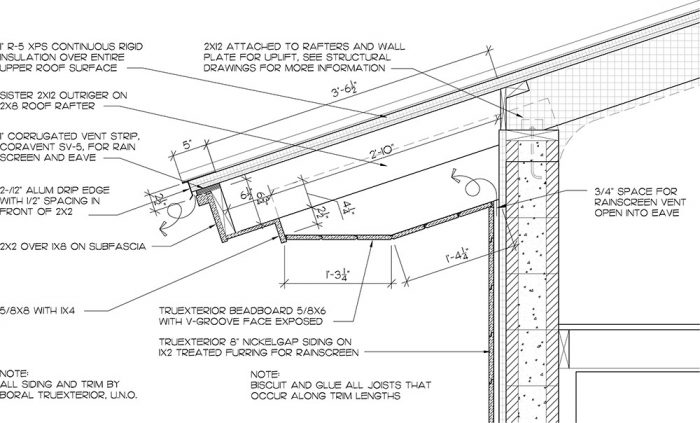 |
I appreciate the show and all the helpful information and discussions.
Related Links:
Visit the Taunton Store • Magazine Index • Online Archive • Our First Issues • All Access
Help us make better episodes and enter for a chance to win an FHB Podcast T-shirt: www.finehomebuilding.com/podcastsurvey
If you have any questions you would like us to dig into for a future show, shoot an email our way: [email protected].
If we use your question we’ll send you a FHB Podcast sticker!
FHB Podcast T-shirts!
Represent your favorite podcast! Available in several styles and colors. Made from 100% cotton. Find the Podcast t-shirt and more cool products in the Fine Homebuilding Store.
This episode of the Fine Homebuilding podcast is brought to you by BuildBook.
Happy Clients. More Profits. Less Stress. That’s the trifecta of the construction business. We all want that, right? Well, after working and talking with 100’s of home builders and remodelers over the past 2 years, BuildBook has discovered the one common ingredient that determines the success of your construction business…the client experience.
Yes, if you drop the ball anywhere in the client experience from the first impression to the final payment, things can get super messy super quickly.
BuildBook has spent the past several months developing the first-of-its-kind platform that focuses on helping you deliver throughout the client journey the one thing standing between you and achieving the trifecta of construction.
It starts with marketing tools to attract the right leads. Add in sales tools so you can win the best projects. And finish with project tools that knock your clients socks off!
If you’re looking for an unfair advantage in your business, this is it. Head on over to BuildBook.co now to try it free for yourself.
Visit BuildBook.co for more.
Fine Homebuilding podcast listeners can get 20% off anything in the Taunton store, including the Renovation, 5th Edition.
Use the discount code FHBPODCAST to take advantage of this special offer.
We hope you will take advantage of a great offer for our podcast listeners: A special 20% off the discounted rate to subscribe to the Fine Homebuilding print magazine. That link goes to finehomebuilding.com/podoffer.
The show is driven by our listeners, so please subscribe and rate us on iTunes or Google Play, and if you have any questions you would like us to dig into for a future show, shoot an email our way: [email protected]. Also, be sure to follow Fine Homebuilding on Instagram, and “like” us on Facebook. Note that you can watch the show above, or on YouTube at the Fine Homebuilding YouTube Channel.
The Fine Homebuilding Podcast embodies Fine Homebuilding magazine’s commitment to the preservation of craftsmanship and the advancement of home performance in residential construction. The show is an informal but vigorous conversation about the techniques and principles that allow listeners to master their design and building challenges.
Other related links
-
- All FHB podcast show notes: FineHomebuilding.com/podcast.
- #KeepCraftAlive T-shirts and hats support scholarships for building trades students. So order some gear at KeepCraftAlive.org.
- The direct link to the online store is here.































